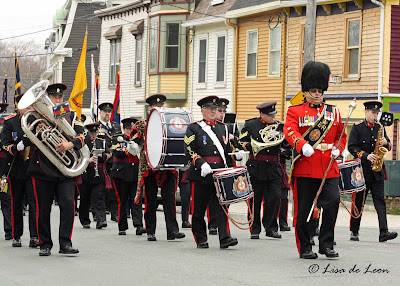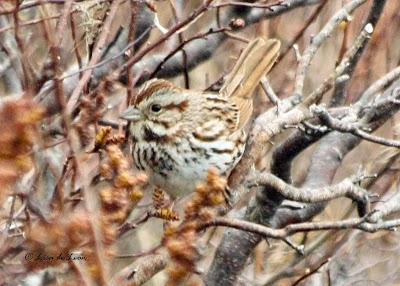This is the time of the year when "more is more." Baby ducklings are showing up on the water's edge and numbers are increasing. Such was the case in my family this week as well. We welcomed a beautiful baby girl into the world on May 24th. It has been a busy and exciting time. Maybe another little birdwatcher to nurture....
By Friday things settled down a bit and I squeezed in a morning of birding in a park West of the city. The usual favorites such as this Boreal Chickadee were present in increasing numbers. I never tire of watching them.
The American Robins are every where, on the ground and in the trees. Their rich song fills the air.
The Yellow-rumped Warblers have been around for more than two weeks and are now on most every tree, loudly singing their repertoire of songs.
On Friday as we entered the park THREE American Bitterns lifted off from different areas of the marsh. It seems impossible to slip up on these guys. This is the second time that they were inadvertently flushed.
The Black and White Warblers are now in the mix but not yet as prevalent as the Yellow-rumped. On this day, I think that I have learned the song of the Black-and White. It is quite unique. Only time will tell if I can retain this learning.
There seem to be more Fox Sparrows this year than last but then again, maybe I am just looking in the right places. The Fox was located in two different areas on this birding trip.
The Swamp Sparrows have increased in numbers very quickly. They can often be found in the tall grass around the marshy areas. This one, however, showed up in the trees and like most little birds it has hidden itself well behind the branches.
When it was not partially hidden, it decided to give me the cold shoulder and would not turn around. This perspective provides a great look at the rich colors on its head and back.
Yesterday was my first sighting of the Wilson's Warbler for 2011. While they don't seem to be plentiful yet, they are here. It was very difficult to get close to one on this trip. I think after they have been here for a while, they will be more approachable.
For me the best bird of the spring so far has been this stunning White-throated Sparrow. His fresh spring colors and very distinct song make it a stand-out.
Now that I am making progress on identifying small birds by sight it is time to begin learning the songs and calls of the birds. This is an extremely valuable skill as it can help to id the bird before it is seen. Why do this? Well, birds have different behaviours and areas of the tree or ground that they frequent. To know what to look for by the sound can help to spot the bird more quickly.
Because I don't hear high-pitched frequencies as well as I once did, this is going to be a real challenge for me. Sometimes I hear only part of the sound as the rest of it gets lost in the wind. I think time and practice will be required. I guess I will just have to go birding more often:)
Bayfront Park 2022 "Big Year"
1 year ago












































 I want a "do-over!" Thinking that it really should be Spring, I went for a jaunt to the beach with my granddaughter. She was dressed in layer upon layer in an attempt to stay warm. Mittens at the beach is not my idea of spring.
I want a "do-over!" Thinking that it really should be Spring, I went for a jaunt to the beach with my granddaughter. She was dressed in layer upon layer in an attempt to stay warm. Mittens at the beach is not my idea of spring. 




















